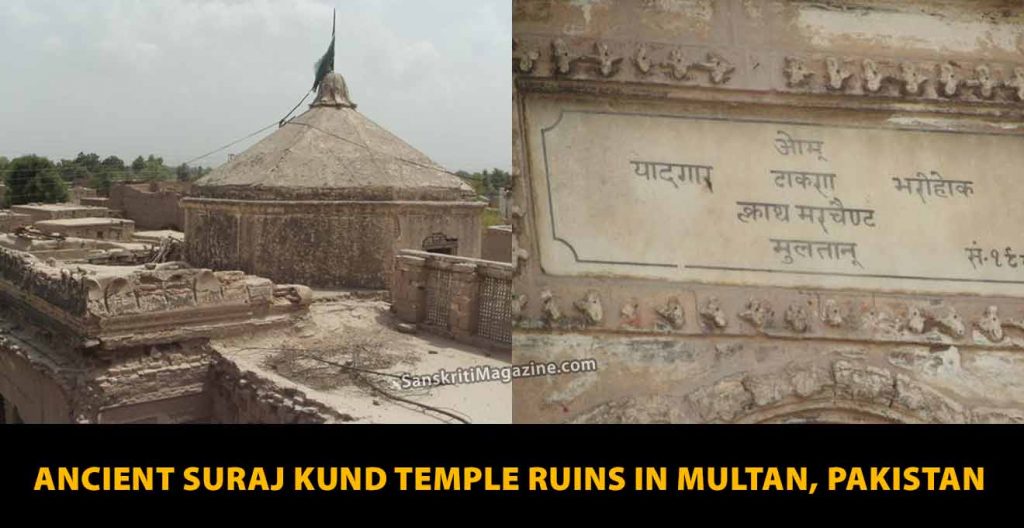Before the Balaji temple at Tirupati and Anantha Padmanabha temple at Tiruvananthapuram became richest temples of India there was one temple at Multan, Punjab, now Pakistan, 2000 years ago which had 6000 staff and a very big income. Here are some interesting but sad facts from the following book written by a Muslim historian.
By Dr. MUMTAZ HUSSAIN PATHAN ( History of Sind Series, Vol.2, Sindhi Adabi Board, Hyderabad, Sind, Pakistan, 1978)
“The term Multan is derived from Sanskrit Malisthana (Maali- Asthan) which means the seat of Maalee, a people who are reported to have been dominant in West Pakistan in the ancient times. The Mali might have been the Maloi of the Greek writers who along with the Shibi (Sibi) were the two great people or tribes which inhabited a greater portion of Indo- Pakistan subcontinent. Many names are still connected with these tribes both in India and Pakistan which show the importance in which these peoples were held in ancient times. Malwa in central India and Sibi in Baluchistan, Siwistan in Sind and Shivi Kot (Shorkot) in Punjab perpetuate the name of these tribes and the extent of their cultural influence on the sub continent.
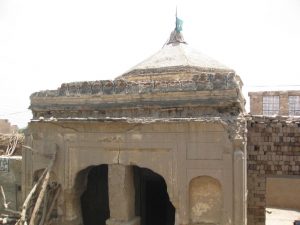 The ancient name of Multan is reported to have been Kasyapa – pura, placed on it after Rishi Kashyapa, who was one of the sons of Manu, the direct descendent of God Brahma. Manu had seven sons and these are represented in the heavens by the seven stars of the Great bear. It also seems to have derived its name from “Mul”, the sun god, whose statue adored the temple of Multan. This is attested to from the accounts of Arabs who speak of Multan as the chief centre of Sun worship in the northern part of the Indus valley.
The ancient name of Multan is reported to have been Kasyapa – pura, placed on it after Rishi Kashyapa, who was one of the sons of Manu, the direct descendent of God Brahma. Manu had seven sons and these are represented in the heavens by the seven stars of the Great bear. It also seems to have derived its name from “Mul”, the sun god, whose statue adored the temple of Multan. This is attested to from the accounts of Arabs who speak of Multan as the chief centre of Sun worship in the northern part of the Indus valley.
The term “Mul” in Sanskrit means the root or origin; it also means heaven, ether, atmosphere, space or god. Any one of these names can be made applicable to sun, the lord of ethereal space. It is related that the temple of Multan was the first ever built in the sub continent for the worship of sun god, by Samba, the son of lord Krishna.
It was named Adiyasthana or the first shrine. Aditiya is the corruption of Aditiyah (or the sun) which is usually shortened to Adit and even Ayt as in the case of Aditwara (or Aytwar) for Sunday. The sun worship in Multan may be very ancient. According to one tradition it was instituted by the famous Prahlada, the son of Daitya (or Hiranyakasipu), the son of Manu. The famous Sanskrit scholar AL-Beruni relates that the deity of Multan which was named after sun, was built in the Karta-Jug (Krta Yuga), which according to his calculations was 216432 years old.
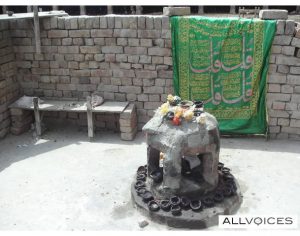 Multan and its temple claim remote antiquity. It has been mentioned in the accounts of the Greek admiral Sky lax, who is reported to have explored the regions of Punjab and Sind during the reign of Darius I (550—486 BC), the third Achaemenian ruler of Iran. The description of the city of Kasyapapura given by Herodotus and Ptolemy and the account of its situation bring it to the site of Multan.
Multan and its temple claim remote antiquity. It has been mentioned in the accounts of the Greek admiral Sky lax, who is reported to have explored the regions of Punjab and Sind during the reign of Darius I (550—486 BC), the third Achaemenian ruler of Iran. The description of the city of Kasyapapura given by Herodotus and Ptolemy and the account of its situation bring it to the site of Multan.
Alexander the great who visited the temple of Multan was wonder struck at the excellence of the human art with which the deity was built and suspended in the air by the pull of magnet. Multan is also spoken by the Chinese pilgrim Huen –Tsang, as flourishing city with the temple of sun, which he falls U-fa-Tsun (Aditya) the sun god.
The name of Multan appears as Mulo—san –pu-la (i.e.Mulasthanapura) and he further adds that the image of sun god was carved out of pure gold and was adorned with every kind of precious stones. During the period of his visit, Multan was situated on the eastern bank of the river Ravi but the river had long ago abandoned its course and it now more than thirty miles distant.
Arabs who became masters of the Indus valley identified the deity with that of job (Ayub) the Hebrew prophet.
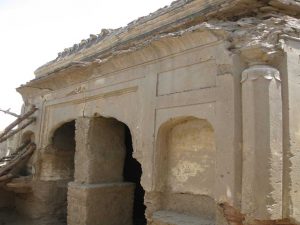 Multan was the capital of one of the provinces of the Hindu kingdom of Sind, before the invasion of the Arabs. It is reported to have been captured by chach, the Brahmin ruler Alor, who usurped the power after the death of Rai Sehasi 2, the last Buddhist ruler of Sind. At the time of Arab attack Multan was held by Raja Kanda who offered stiff resistance to the invading army and cut off the provisions from the south. The army, therefore, killed asses and used them as food.
Multan was the capital of one of the provinces of the Hindu kingdom of Sind, before the invasion of the Arabs. It is reported to have been captured by chach, the Brahmin ruler Alor, who usurped the power after the death of Rai Sehasi 2, the last Buddhist ruler of Sind. At the time of Arab attack Multan was held by Raja Kanda who offered stiff resistance to the invading army and cut off the provisions from the south. The army, therefore, killed asses and used them as food.
(Sind= Sindhu)
According to the version of chachnamah the head of the animal cost five hundred dirhams, which may be an exaggeration. The priests of Multan who were tired of the prolonged misery entered into negotiations with the Arab army and surrendered the fort to them. Large quantities of gold were obtained by the Arabs from the temple of Multan and as such it became known as Farj bayt al-Dahab .
Rulers of Multan
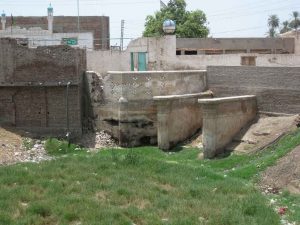 The names of rulers of Multan who succeeded during a long period of nearly two centuries do not appear systematically in historical sources.
The names of rulers of Multan who succeeded during a long period of nearly two centuries do not appear systematically in historical sources.
It has been reported the Quarmathian missionary work was in full swing during the later period of the Arab rule in Sind on account of the propaganda machinery handled by men like al-Haytham and Jalan ibn Shayban. The latter who was a great Ismaili fanatic broke the deity of Multan into pieces and ordered the closure of Umayyad mosque built earlier by Muhammad ibn al-Qasim, the Arab conqueror of Sind.
The deity of Multan
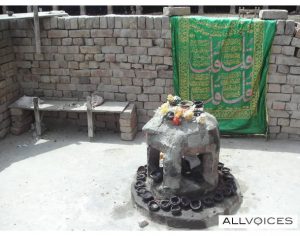
The deity of Multan identified with job, the Hebrew prophet by the Arab historians, was one of the few deities to which the people flocked in large numbers from various regions of the subcontinent. During the period of Arab rule, the temple was the main source of revenue to the state and the rulers defrayed most of their needs from the income of the temple.
The deity of Multan is reported to have resembled a man, seated on a chair. Its body was covered with red skin in such a manner that nothing of it could be seen, excepting the eyes which are reported to have been two gems of great value. The jewels were fixed in the sockets with such a great skill that they looked real. Ibn Nadim reports that these gems were bigger than eggs of the sparrow and shone with brilliance in the temple. A crown of gold also adored the head of the deity, whose hands were placed on knees and the fingers of one of his hands show as if he was counting four. (My comments: It must be Chin Mudra of Hindu Gods: swami).
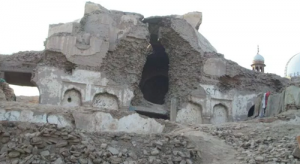 There were two other deitys in Multan known as JUNBUKAT and ZUNBUKAT (My comments: Dwara palakas?). Both were carved out of stone and were placed at an elevation of eighty yards on both sides of the valley. Since these deitys were seen from a great distance, the pilgrim would alight at the first sight and proceeded to the temple bare footed as a sign of reverence.
There were two other deitys in Multan known as JUNBUKAT and ZUNBUKAT (My comments: Dwara palakas?). Both were carved out of stone and were placed at an elevation of eighty yards on both sides of the valley. Since these deitys were seen from a great distance, the pilgrim would alight at the first sight and proceeded to the temple bare footed as a sign of reverence.
(We see such things even today in Hindu pilgrimage centres).
Gifts and presents were brought to the deity of Multan from a greater distance; in some cases from places more than one thousand miles away. Sacrifices are offered to the deity after shaving the heads and also circumambulation of the temple ( my comments: This is done by Hindu on a large scale even today at Tirupati Balaji temple and Palani Murugan temple: swami). The sacrifices at Multan had various modes, some of which were horrible to the extreme. Some pilgrims would take out their eyes with the knife and place it before the deity. Others would select a long stick of bamboo and after making one of its ends sharp, would place the navel of their stomach over it. The pilgrim would then press against it in such a manner that it passed through his belly and caused his death.
(The eye episode reminds us of Kannappa Nayanar, Vishnu and Sibi in Buddha Jataka. ) — with Srilan Srisukumaran.

